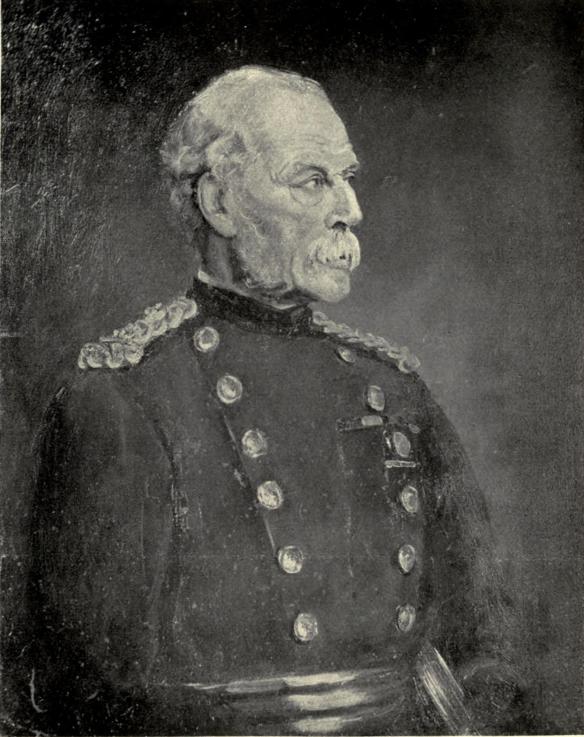(1821-1911)
A highly competent senior officer, General Sir Frederick C. A. Stephenson was commander of the British Army of Occupation in Egypt after the 1882 Arabi Rebellion and commander at the last battle of the Gordon Relief Expedition in 1885.
Stephenson, born in 1821, saw active service in the Crimean War. After the outbreak of war in China in 1857, Stephens on , as a lieutenant colonel, commanded the troops on board H. M. T. Transit- one of the officers on board was Lieutenant (later Field Marshal Vis count) Garnet J. Wolseley – which was shipwrecked on 10 July 1857. Stephens on served in China until 1860.
After the Arabi Rebellion in Egypt was suppressed by a British force commanded by Wolseley in 1882, Stephenson, as a lieutenant general, commanded the British Army of Occupation. After the bloody defeat of the Egyptian Gendarmerie by dervish forces at the Battle of El Teb (4 February 1884) Stephenson was ordered to send a force, commanded by Major General (later Lieutenant General) Sir Gerald Graham, V. C., to the eastern Sudan.
By March 1884, Major General Charles G. Gordon, who had been sent to assess the situation in the Sudan, was in a desperate situation in Khartoum. Tentative plans were being made to send an expedition to rescue him. Wolseley, then adjutant- general at the War Office, favored the 1,426-mile Nile River route from Cairo to Berber, while Stephens on and Major General (later Field Marshal) Sir (Henry) Evelyn M. Wood, V. C., sirdar of the Egyptian Army, preferred the 245- mile route across the desert from the Red Sea port of Su akin to Berber. Wolseley’s prestige and earlier success on the 1870 Red River Expedition resulted in the choice of the Nile route in August 1884.
Stephenson was the obvious choice to lead the force to relieve Gordon, but it was decided he should not command an expedition he felt certain would fail. Wolseley was then designated to supersede Stephenson in command of all troops in Egypt, and in October 1884 he would also take command of the relief force. Stephenson considered resigning but did not, and served in a support role during the Gordon Relief Expedition. When Wolseley returned to England on 27 June 1885, after the conclusion of the Gordon Relief Expedition, the command of troops in Egypt (not including the Egyptian Army) reverted to Stephenson.
Stephenson commanded the troops that defeated the Khalifa’s dervish troops at the Battle of Ginnis (30 December 1885). This was basically the last engagement of the Khartoum campaign, after which the British withdrew tot ally from the Sudan and fixed the Egyptian- Sudanese border at Wadi Halfa. Stephenson remained in command of the troops in Egypt until 1888. Stephenson, of whom Wolseley wrote, “A more de voted or gallant soldier, a more perfect gentleman , an abler commanding officer or a better fellow never breathed” (Wolseley 1903, p. 1: 231), died in 1911. His book At Home and on the Battlefield: Letters from the Crimea, China and Egypt, 1854- 1888, was published in 1915.
References: Barthorp (1984); Neillands (1996); Preston (1967); Symons (1965); Wolseley (1903)
